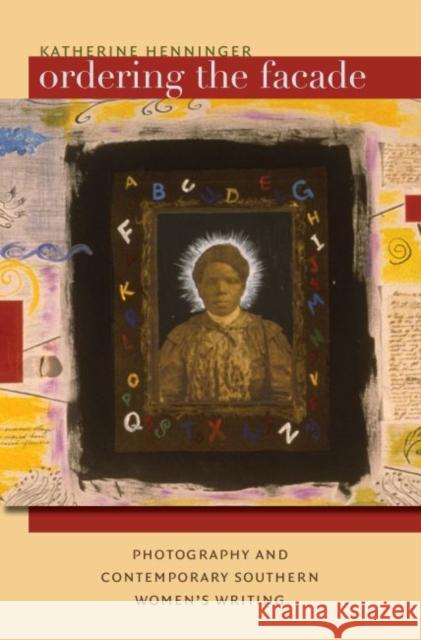Ordering the Facade: Photography and Contemporary Southern Women's Writing » książka
Ordering the Facade: Photography and Contemporary Southern Women's Writing
ISBN-13: 9780807858059 / Angielski / Miękka / 2007 / 256 str.
Proposing a new way to map intersections of photography and American literature, Katherine Henninger demonstrates the importance of pinpointing specific cultural and subcultural history. Ordering the Facade traces the visual and literary cultures of southern womanhood that have ordered the image of "the South" from its plantation past to its "postsouthern" present. Assessed in light of these visual legacies, contemporary writing by southern women emerges vividly in Henninger's analysis as both shaped by and shaping these continuously powerful representations.
Typically celebrated for their oral traditions, Henninger argues, the South and its literature have in fact primarily relied on visual characteristics such as skin color, gender, or dress to mark social "place" and identity. From postmodern art gallery to family album, photography in southern culture has both reinforced these cultural prejudices and provided potent counterimages. Henninger analyzes photography's literary functions in memoir, fiction, screenwriting, and poetry by a wide range of contemporary authors including Dorothy Allison, Ann Beattie, Rosemary Daniell, Julie Dash, Ronlyn Domingue, Josephine Humphreys, Jill McCorkle, Lee Smith, Natasha Trethewey, Anne Tyler, and Alice Walker. As each of these writers distinctively re-envisions traditional constructions of southern womanhood, Henninger shows, she joins the others in challenging the constrictions of "southern woman" and so changing the meaning of southernness itself.
Proposing a new way to map intersections of photography and American literature, Katherine Henninger demonstrates the importance of pinpointing specific cultural and subcultural history. Ordering the Facade traces the visual and literary cultures of southern womanhood that have ordered the image of "the South" from its plantation past to its "postsouthern" present. Assessed in light of these visual legacies, contemporary writing by southern women emerges vividly in Henningers analysis as both shaped by and shaping these continuously powerful representations.
Typically celebrated for their oral traditions, Henninger argues, the South and its literature have in fact primarily relied on visual characteristics such as skin color, gender, or dress to mark social "place" and identity. From postmodern art gallery to family album, photography in southern culture has both reinforced these cultural prejudices and provided potent counterimages. Henninger analyzes photographys literary functions in memoir, fiction, screenwriting, and poetry by a wide range of contemporary authors including Dorothy Allison, Ann Beattie, Rosemary Daniell, Julie Dash, Ronlyn Domingue, Josephine Humphreys, Jill McCorkle, Lee Smith, Natasha Trethewey, Anne Tyler, and Alice Walker. As each of these writers distinctively re-envisions traditional constructions of southern womanhood, Henninger shows, she joins the others in challenging the constrictions of "southern woman" and so changing the meaning of southernness itself.











